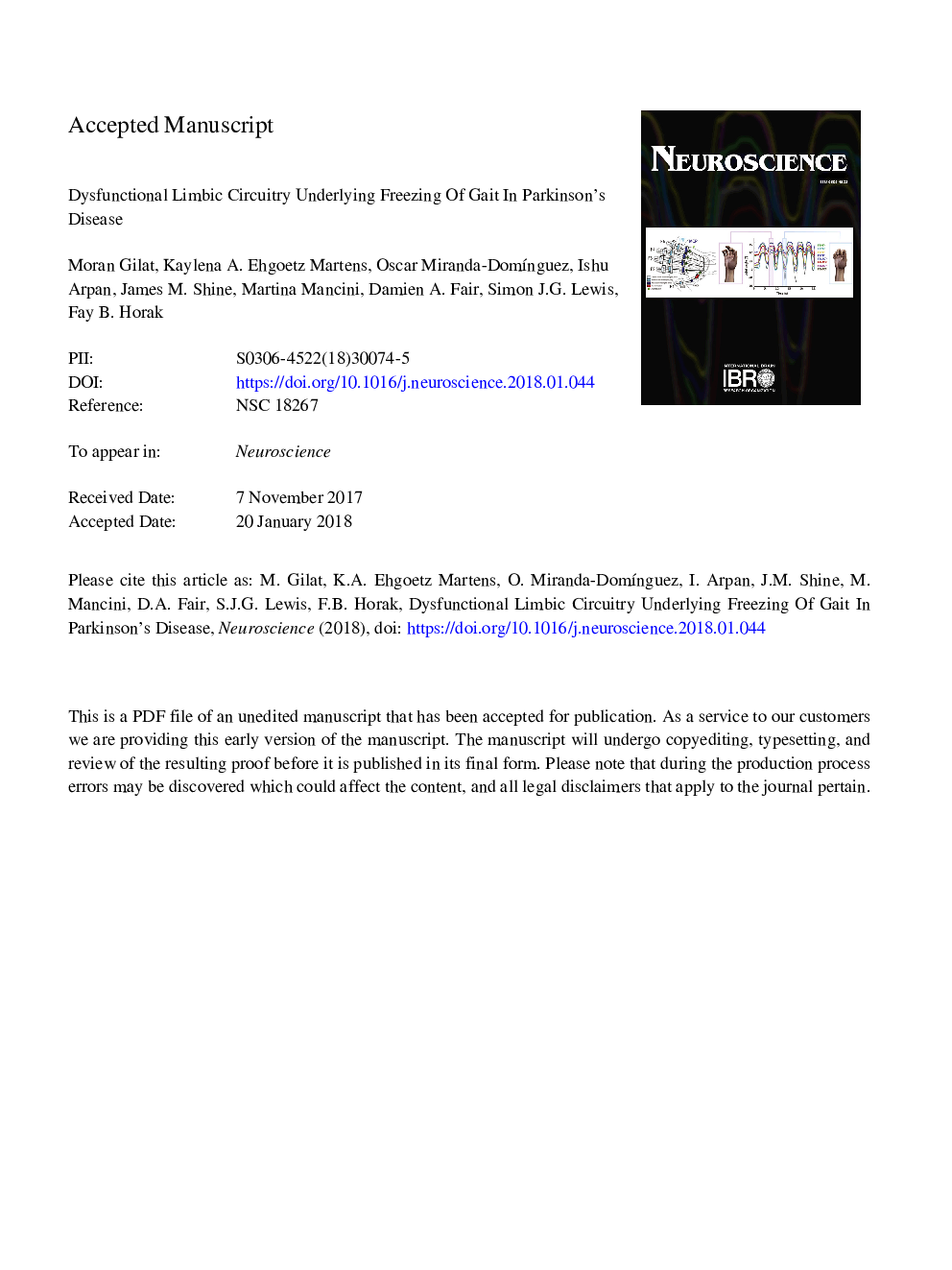| Article ID | Journal | Published Year | Pages | File Type |
|---|---|---|---|---|
| 8840915 | Neuroscience | 2018 | 37 Pages |
Abstract
Freezing of gait (FOG) is a poorly understood symptom affecting many patients with Parkinson's disease (PD). Despite growing evidence of a behavioral link between anxiety, attention and FOG in PD, no research to date has investigated the neural mechanisms that might explain this relationship. The present study therefore examined resting-state MRI functional connectivity between the amygdala, striatum and frontoparietal attentional control network in PD patients with (freezers: nâ¯=â¯19) and without FOG (non-freezers: nâ¯=â¯21) in the dopaminergic 'off' state. Functional connectivity was subsequently correlated with an objective measure of FOG severity and a subjective scale of affective disorder within each group. Connectivity between the right amygdala and right putamen was significantly increased in freezers compared to non-freezers (pâ¯<â¯0.01). Furthermore, freezers showed increased anti-coupling between the frontoparietal network and left amygdala (pâ¯=â¯0.011), but reduced anti-coupling between this network and the right putamen (pâ¯=â¯0.027) as compared to non-freezers. Key functional connections between the amygdala, putamen and frontoparietal network were significantly associated with FOG severity and a fear of falling. This study provides the first evidence that dysfunctional fronto-striato-limbic processes may underpin the link between anxiety and FOG in PD. It is proposed that freezers have heightened striato-limbic load and reduced top-down attentional control at rest, which when further challenged by the parallel processing demands of walking may precipitate FOG.
Keywords
Related Topics
Life Sciences
Neuroscience
Neuroscience (General)
Authors
Moran Gilat, Kaylena A. Ehgoetz Martens, Oscar Miranda-DomÃnguez, Ishu Arpan, James M. Shine, Martina Mancini, Damien A. Fair, Simon J.G. Lewis, Fay B. Horak,
